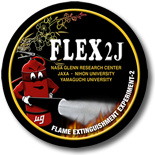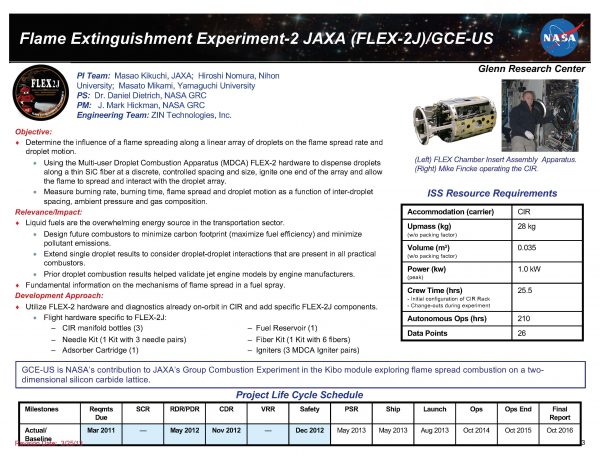FLEX-2J
Flame Extinguishment Experiment -2 JAXA (FLEX-2J)

The FLEX-2J experiment is a joint effort between NASA and the Japanese Space Agency, JAXA, as well as Nihon University and Yamaguchi University. Derived from the JAXA Group Combustion Experiment science objectives, the FLEX-2J will complement those goals using the NASA FLEX-2 hardware and combustion facilities on ISS. FLEX-2J will observe and measure fuel droplet motions during flame spreading along a one-dimensional droplet array. Three droplets will be deployed to fixed positions upon ceramic beads on a silicon carbide fiber. Then an additional three to ten movable droplets are positioned to the fiber at known locations. The first fixed droplet is ignited and the flame is propagated down the array from droplet to droplet. The subsequent burning and motions of the unpinned droplets are recorded; particularly the velocities of the free droplets before and after flame spread are measured. In addition, the experiment will obtain the history of flame leading edge position, flame spread limit span, and the growth process of the group flame along the fuel droplet array. Specifically, the experiment will measure burning rate, burning time, flame spread and droplet motion as a function of inter-droplet spacing, ambient pressure and gas composition.
Related Documents
Currently updating…
Publications
Currently updating…
Contact Information
PI Team: Masao Kikuchi, JAXA; Hiroshi Nomura, Nihon University; Masato Mikami, Yamaguchi University
PS: Dr. Daniel Dietrich, NASA GRC
PM: J. Mark Hickman, NASA GRC
Engineering Team: ZIN Technologies, Inc.

